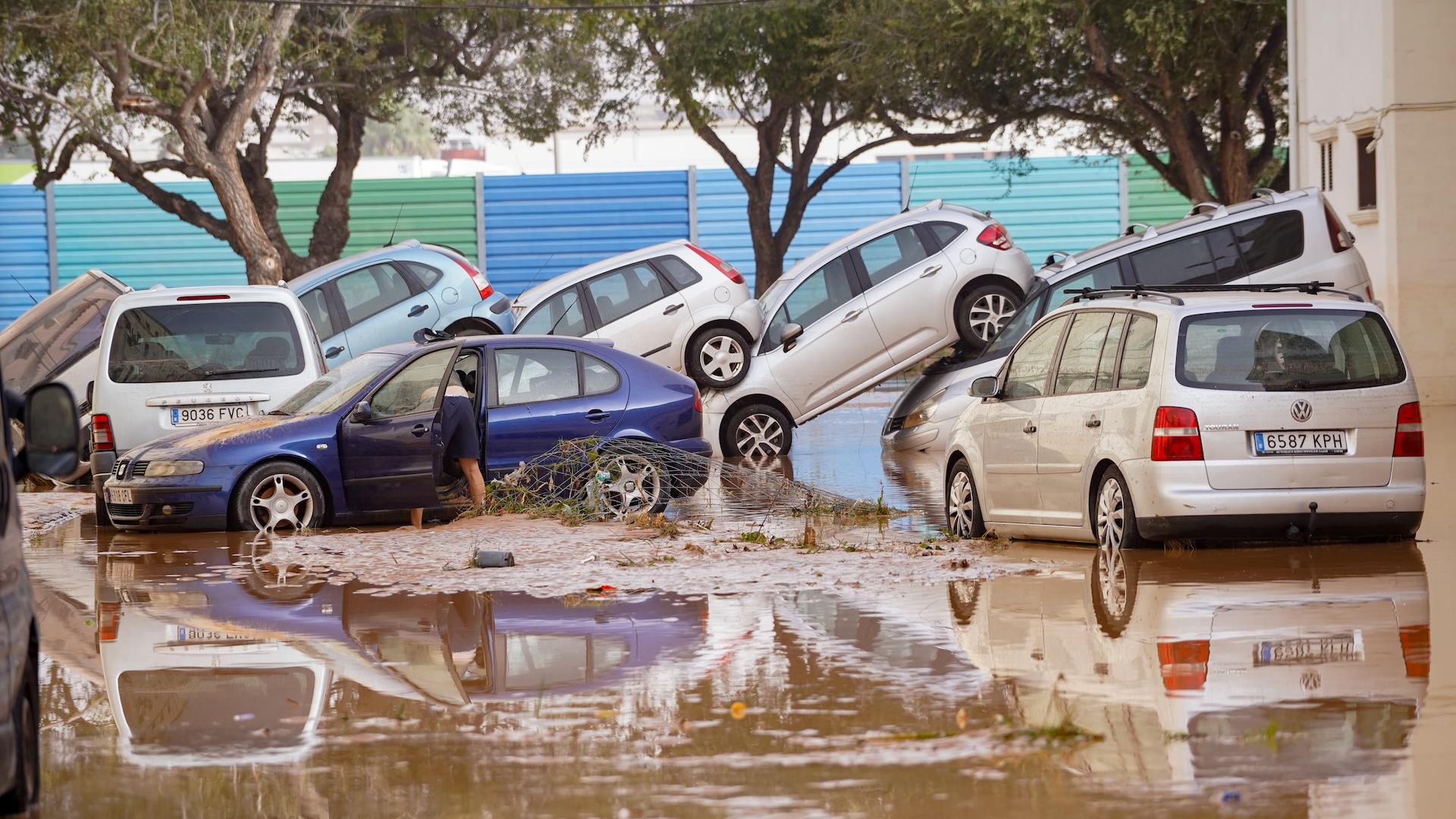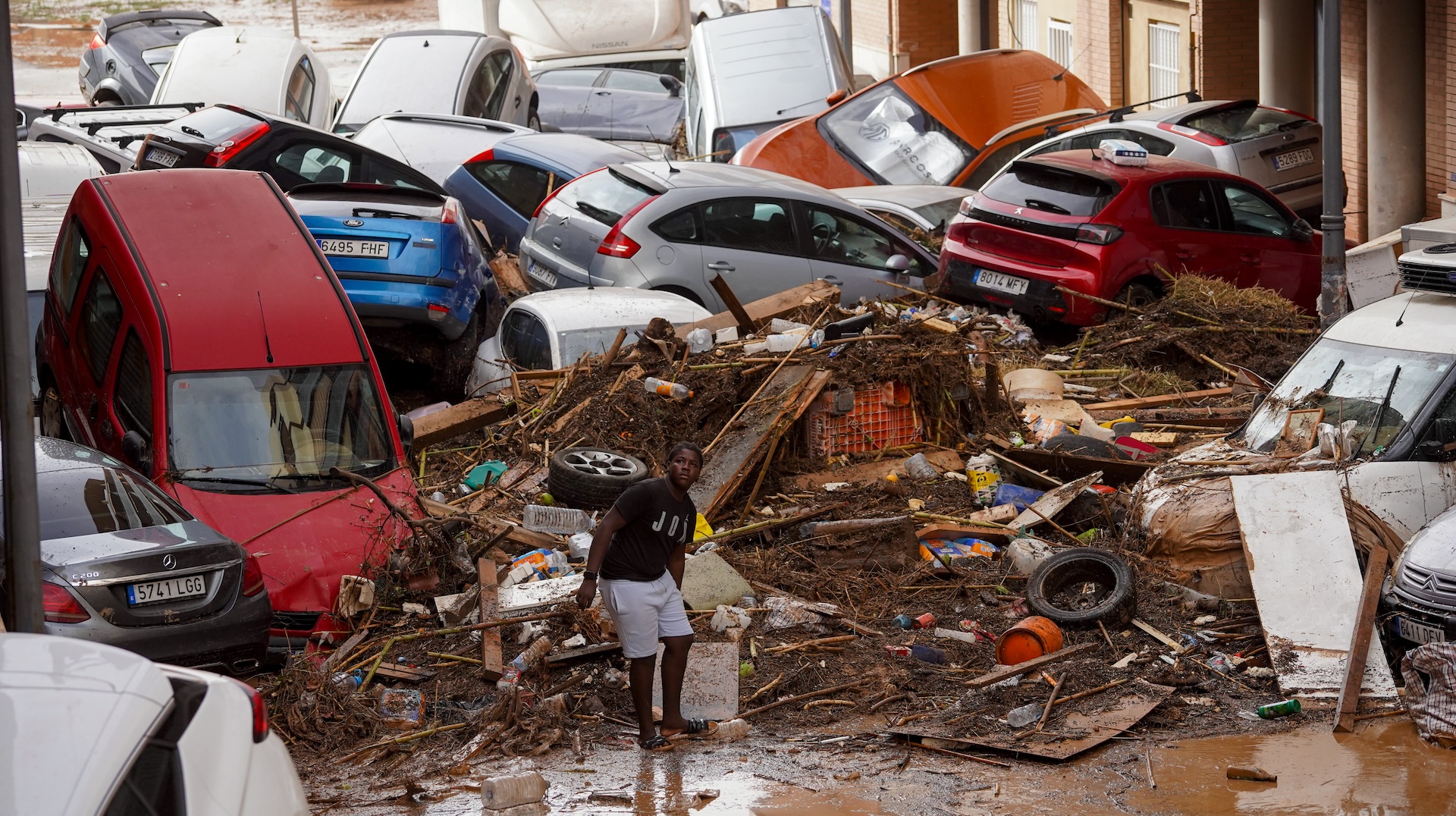
A strange weather phenomenon known as a DANA has caused catastrophic flash flooding in Valencia, Spain, this week. More than 155 people have died and dozens remain missing in what meteorologists are calling one of the worst natural disasters in recent memory.
On Tuesday (Oct. 29), some areas received the equivalent of a year's worth of rainfall in just a few hours, triggering massive floods that devastated entire towns and left thousands of people stranded. In some areas, rainfall reached up to 20 inches of rainfall (500 liters per square meter).
The cause of this disastrous weather is a phenomenon that forms in the Mediterranean called a Depresión Aislada en Niveles Altos (DANA),a Spanish phrase that translates to isolated depression at high levels. It was the most severe DANA recorded in the 21st century, comparable to the catastrophic "Pantanada de Tous" in 1982, according to Spain's State Meteorological Agency (Aemet).
What is a DANA?
DANAs are intensified versions of what's known as a "cold drop," which occurs when a mass of warm air collides with a stagnant mass of cold air at an altitude of around 29,500 feet (9,000 meters).
In the upper atmosphere, there is a very strong wind current that surrounds Earth like a belt. Sometimes, this current begins to oscillate, appearing more like a snake than a belt. When this happens, the oscillation can get "stuck," enabling the mass of cold air to remain in one place. On this occasion, it happened over southeast Spain.
A DANA occurs when this cold air meets very warm air near the surface, especially above the warm waters of the Mediterranean. This combination creates a significant temperature difference between the different layers of the atmosphere, which in turn causes the warm air to rise easily and become saturated with water vapor.
If this temperature contrast is combined with humidity and energy from the Mediterranean, which is very warm after the summer months, the result is heavy storms and torrential rain.
"The winds may not be as violent as those of a hurricane, but in terms of rainfall and intensity, they can even surpass them. These events can cause material damage and loss of life as significant as those of an average hurricane," Jorge Olcina, director of the Climatology Laboratory at the University of Alicante, told Live Science.

Iago Pérez, a geoscientist at the University of Oxford, described DANAs as one of the most dangerous meteorological phenomena in Spain, noting that "they release enormous quantities of water in a very short time."
DANAs form only over Spain, but similar weather patterns, called extratropical cyclones, form in the Atlantic off Uruguay and Argentina, the researchers said.
On Oct. 29, the DANA hovered over the same area for more than 12 hours, making it the most intense day of the weather event — which is expected to continue with less intensity until Sunday (Nov. 3).
DANAs use warm water as "fuel," meteorologist Mar Gómez told Live Science.
The DANA encountered water temperatures around 72 degrees Fahrenheit (22 degrees Celsius) off the coast of Valencia, while the usual temperature for this time of year is around 70 F (21 C). That difference may seem small, but it is enough to supply the storm system with extra energy. This can "trigger a cascade of rainfall in a very short period," Olcina said."These rains can be characterized as monsoonal."
What does climate change have to do with it?
Gómez and Olcina agree that the severity of this week's DANA is directly related to climate change. Pérez, however, thinks pinning the phenomenon on global warming requires deeper analysis.
The Mediterranean Sea is one of the marine basins that has warmed the most in recent decades. It acts as a "transmission belt for humidity and energy," Olcina said. Since the 1980s, the average temperature of the Mediterranean has increased by 2.7 F (1.5 C) — almost double the rise in air temperature in the region over the same period. "Since 2020, summers on the Iberian Peninsula have seen record temperatures, and this year, sea surface temperatures have exceeded 84.2 F [29 C]" Olcina said.
This warming has altered the timing of DANAs, as the Mediterranean now begins to heat up in May and retains that warmth through November. In comparison, during the 1980s and 1990s, this phenomenon generally occurred in September and October. Currently, an estimated 15% to 20% more DANAs form each year compared with six decades ago.
For researchers, this episode offers important lessons, beginning with the need to improve early warning communication protocols.
"When there are fatalities, it means that something has gone wrong. Communication and anticipation of these events must be enhanced," Gómez stated.
Climate change will likely fuel more frequent intense and exceptional precipitation events. This underscores the urgent need to adapt prevention and protection systems and to restructure vulnerable areas to reduce risks associated with an increasingly extreme climate, Olcina said.







